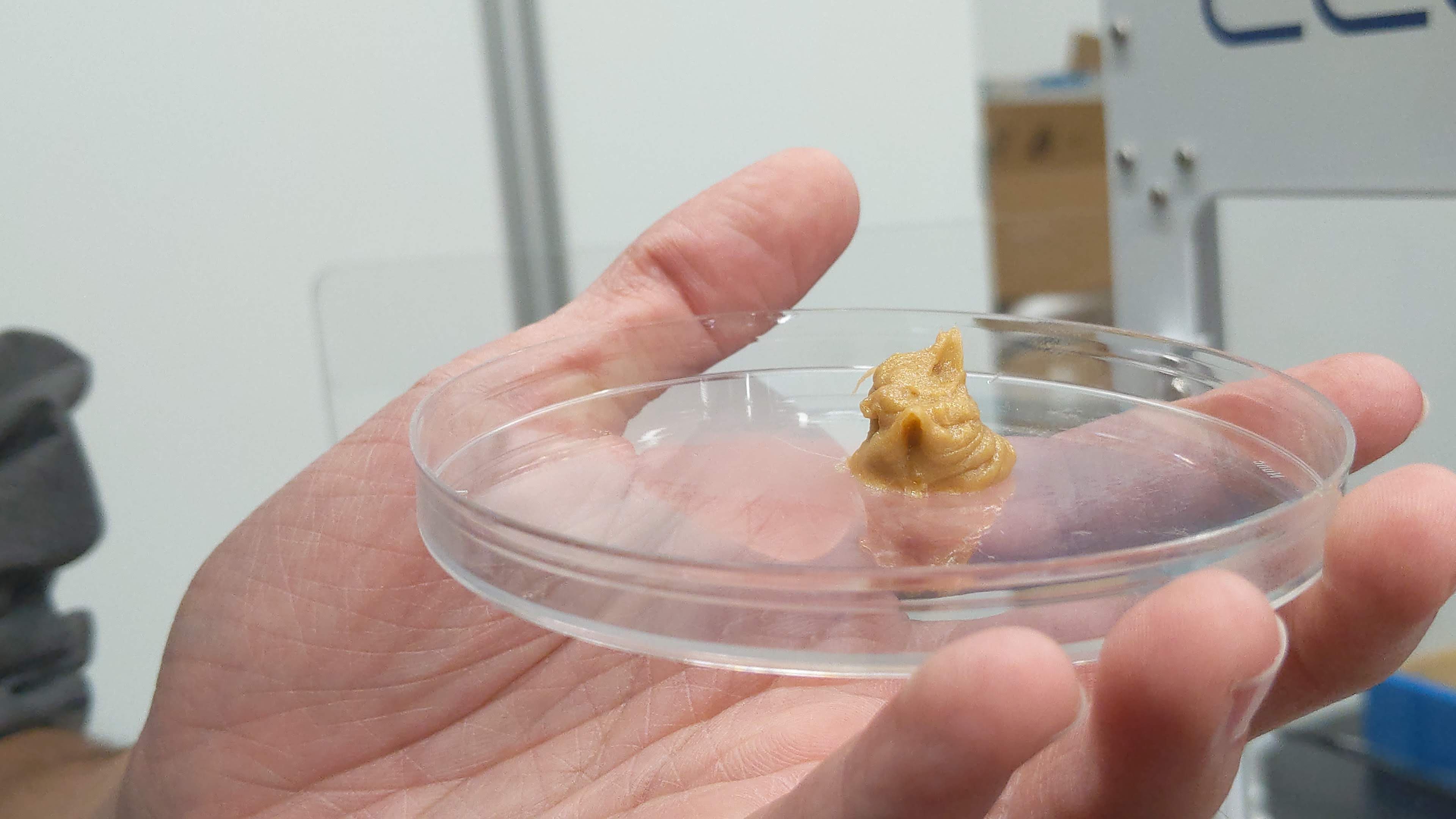First real quick, here's a video showing some of the progress I made with printing copper:
But now I'm afraid to say this might be my last post on the subject, because I'm deviating pretty far from the "metal" aspect of the original project title. And that's fine. Goals change. I thought it was really cool to do glass, for instance. Now I'm pretty involved in printing goop.
Hydrogel goop:

Honey-alginate goop (this is supposed to be my head):

Toothpaste goop:

Wait, toothpaste goop? Apparently, yes, it prints surprisingly well! Better than honey or caramel or even the commercial hydrogel, anyway. It's not great, but go slow and you can make shapes that actually survive with high fidelity after drying out.
I've been trying to be at least somewhat scientific with this, for instance, using this fancy machine to measure the rheological properties of my honey:


What's interesting is that all this machine does is measure resistance to applying torque, which means you can do something very similar by measuring the power requirements for a handheld drill stirring a liquid. (I learned this from Brad Woods when I went to the virtual foundry). The main difference is precision which is why this machine costs $120,000...
And basically from these results we can see that honey indeed undergoes shear thinning, and in theory this means you can 3D print with it if you get its base viscosity high enough. In practice, getting that viscosity high enough without using additives means that it's an emulsion of liquid and tiny honey crystals. And when you try to force it through a small nozzle, it separates and clogs. Lot of work to do there.
But anyway, I'll close this off with a video of my true success, and in my opinion a crowning achievement (ha!) of my life: Science toothpaste.
 Ahron Wayne
Ahron Wayne
Discussions
Become a Hackaday.io Member
Create an account to leave a comment. Already have an account? Log In.